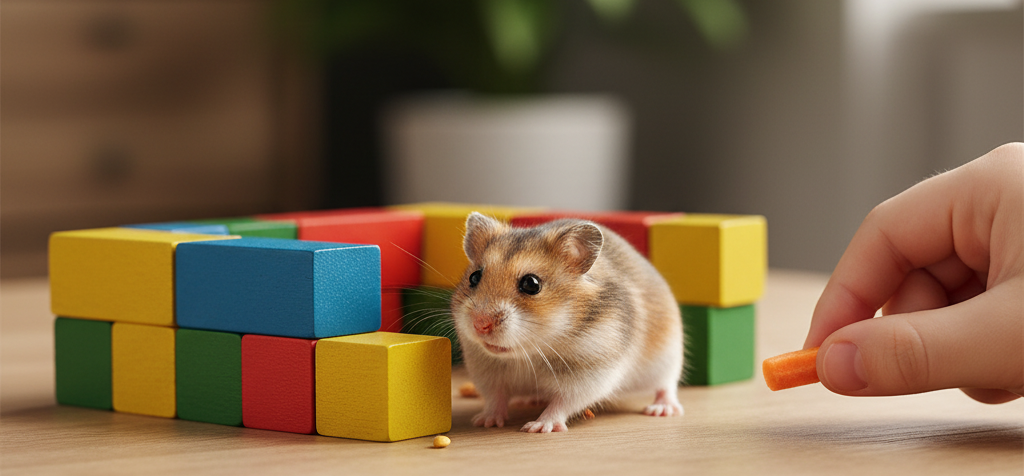Hamsters, small rodents from the family Cricetidae, are adored for their compact size, expressive faces, and lively antics, making them stars in the pets and animals category. Originating from arid regions like Syria and Mongolia, domestic hamsters—particularly the Syrian, Dwarf, and Roborovski breeds—have been cherished since the 1930s as low-maintenance yet engaging companions. Perfect for small spaces and first-time pet owners, hamsters blend quirky behaviors with surprising intelligence, offering insights into responsible pet care and their unique ecological roots.

Evolutionary Traits and Physical Adaptations
Hamsters evolved in harsh desert environments, developing traits like cheek pouches to hoard food and nocturnal habits to avoid daytime heat. Their small, rounded bodies, typically 5-18 cm long, are built for burrowing, with sharp claws and teeth suited for digging and gnawing. Breeds vary: Syrian hamsters are solitary and larger, while tiny Roborovski hamsters are swift, reaching speeds up to 6 km/h. Their large, dark eyes and twitching whiskers enhance navigation in low light, ideal for their crepuscular lifestyle.
Cognitively, hamsters show problem-solving skills, such as navigating mazes or learning to open simple latches, as noted in studies from the University of Bristol. Their scent glands, used for marking territory, reflect complex communication, while their ability to memorize burrow layouts highlights spatial intelligence. These traits make them fascinating pets but require careful handling to avoid stress.
Social Behaviors and Pet Dynamics
In the wild, hamsters are mostly solitary, except for social Dwarf breeds like the Campbell’s, which tolerate company. As pets, they thrive on interaction with owners but need gentle handling due to their delicate size. Syrian hamsters, often called “golden,” demand solo housing to prevent fights, while Dwarf pairs can cohabitate if introduced young. Their behaviors—cheek-stuffing, wheel-running, or burrowing in bedding—captivate owners, reflecting natural instincts.
Training involves patience, using treats like sunflower seeds to encourage trust or litter-box use. Hamsters communicate through squeaks, hisses, or teeth-chattering, signaling comfort or agitation. Ethical care, per PETA guidelines, includes spacious cages (minimum 4,000 cm² for Syrians), deep bedding for digging, and exercise wheels to prevent boredom or obesity. Overbreeding in pet stores, however, often leads to health issues like wet tail, a stress-related illness.

Welfare Challenges and Human Connections
While domestic hamsters face no extinction risk, welfare concerns are significant. Poor pet shop conditions—cramped cages, improper diets—contribute to short lifespans, typically 2-3 years. Abandoned or escaped hamsters cannot survive in the wild, prompting rescues by groups like the National Hamster Council. Pet care requires a balanced diet (pellets, fresh veggies, occasional protein), clean water, and regular cage cleaning to avoid respiratory issues from ammonia buildup.
Human-hamster bonds are surprisingly deep, with their curious nature soothing owners, as seen in therapy settings for children. Culturally, hamsters star in media like Hamtaro, embodying playfulness. Responsible ownership avoids tiny cages or plastic balls, favoring enriched habitats with tunnels and chew toys to mimic natural burrows.
Hamsters in Culture and Research
Hamsters hold a playful cultural niche, from cartoon mascots to symbols of industriousness in folklore. Research into their circadian rhythms, using AI to analyze wheel-running patterns, informs pet care and even human sleep studies. For enthusiasts, adopting from ethical breeders or supporting hamster welfare groups like Hamster Welfare UK fosters connection without exploitation.
Hamsters, with their pint-sized charm and vibrant personalities, remind us that even the smallest creatures can bring immense joy, encouraging thoughtful care to honor their lively spirit.
